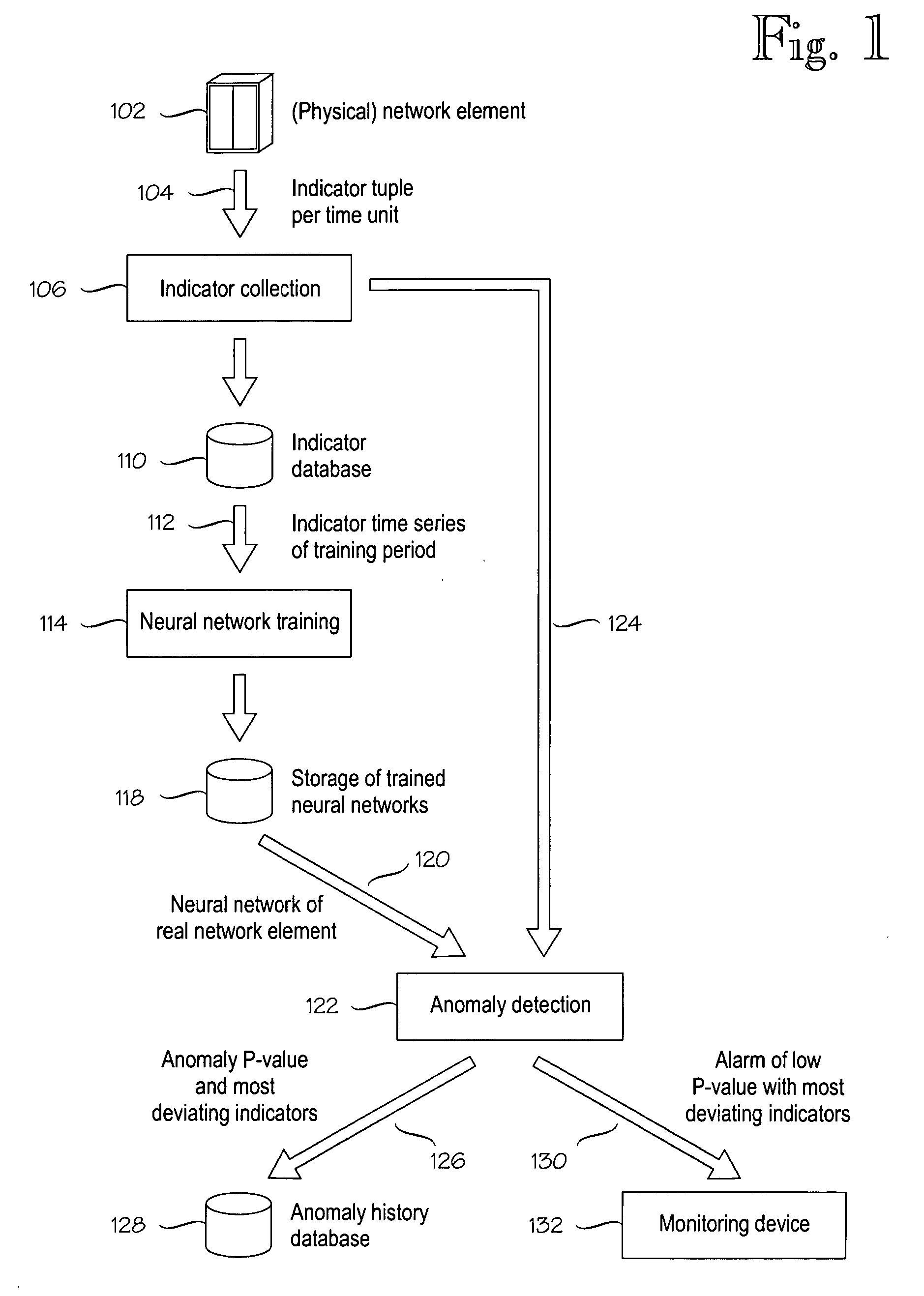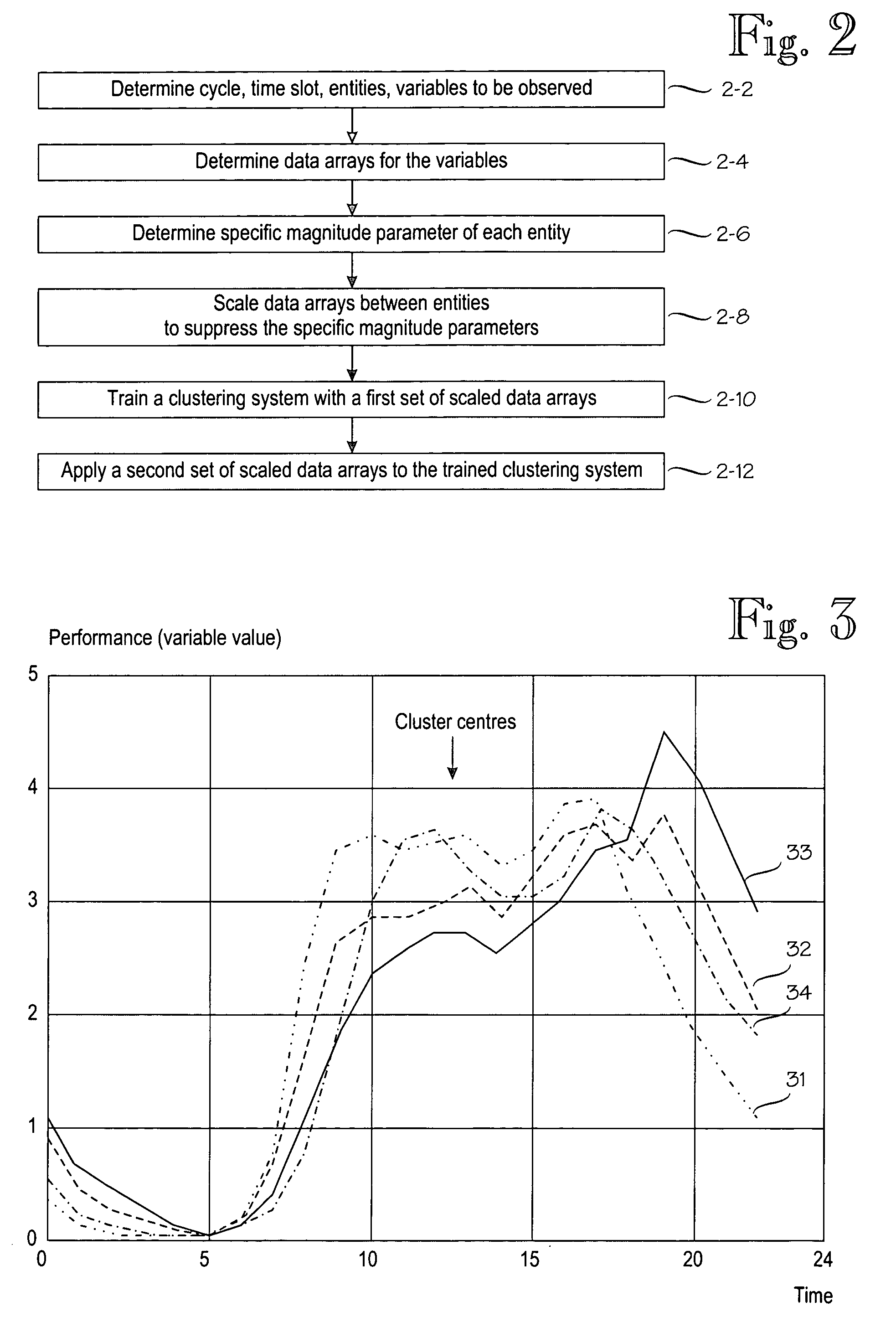Clustering technique for cyclic phenomena
a cyclic phenomenon and clustering technology, applied in the field of clustering techniques for cyclic phenomena, can solve the problems of large amount of useful information, and achieve the effect of saving large amounts of memory spa
- Summary
- Abstract
- Description
- Claims
- Application Information
AI Technical Summary
Benefits of technology
Problems solved by technology
Method used
Image
Examples
Embodiment Construction
[0038] The invention can be used in several applications. An illustrative example is processing anomalous situations. FIG. 1 is a block diagram illustrating the use of a clustering system, such as a neural network, for anomaly detection. Reference number 102 points to an element of a physical system such as a telecommunication network (as distinguished from a neural network). A physical element may comprise several observable variables. For example, if the physical system element 102 is a telecommunication exchange, its observable variables may comprise throughput, waiting time, number (or percentage) of failed calls and the like. For each unit of time, an indicator collector 106 collects an indicator tuple 104. The tuples are stored in an indicator database 110. Reference 112 points to a data set used for training the neural network (or another learning mechanism) 114. The data set 112 should indicate normal behavior of the physical element 102. A storage 118 contains trained neura...
PUM
 Login to View More
Login to View More Abstract
Description
Claims
Application Information
 Login to View More
Login to View More - R&D
- Intellectual Property
- Life Sciences
- Materials
- Tech Scout
- Unparalleled Data Quality
- Higher Quality Content
- 60% Fewer Hallucinations
Browse by: Latest US Patents, China's latest patents, Technical Efficacy Thesaurus, Application Domain, Technology Topic, Popular Technical Reports.
© 2025 PatSnap. All rights reserved.Legal|Privacy policy|Modern Slavery Act Transparency Statement|Sitemap|About US| Contact US: help@patsnap.com



